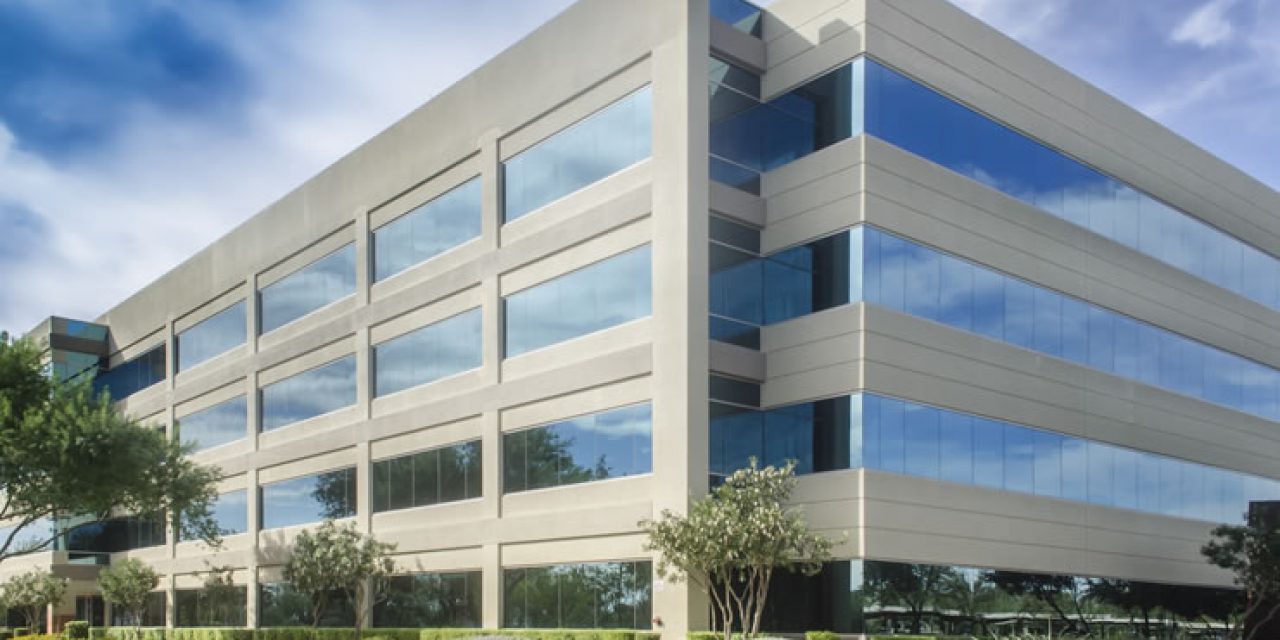How Dutch property development and building company Heijmans and its partners leverage the Internet of Things to drive new business, expand its services and innovate. A case.
As we wrote previously IoT is poised to change the face of facility management and smart buildings. Large organizations with a strong tradition in facility management, energy management and so forth across the globe offer their partners possibilities to leverage the Internet of Things and data analytics for numerous possible applications.
However, forward-thinking and innovative property development and building firms are taking initiatives in smart facility management, smart buildings and other areas where the Industrial Internet of Things and right/smart data come into play, themselves as well.
One of them is Heijmans. The firm was founded as a roadworks company in 1923 in the Dutch town of Rosmalen, close to the borders of Belgium and Germany. Founder Jan Heijmans didn’t just lay the foundations of the company and roads but also of a culture of innovation as he was one of the first to use bituminous road surfaces in the so-called interbellum period. A look at how the company started leveraging the Internet of Things to expand its business and provide smart facility services to customers (and yet another example of the Internet of Things in business practice).
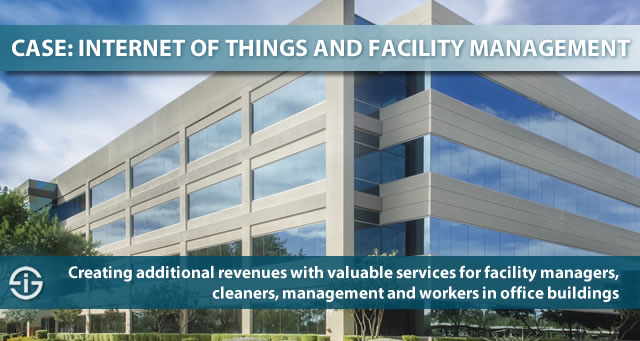
Note: as per usual we have no commercial links of affiliations with any of the mentioned companies.
A culture of innovation for transformation and smart business solutions
Today, over 90 years after its foundation, Heijmans is listed on the Amsterdam Stock Exchange (HEIJM – AMS) and employs close to 4,700 workers. Core activities include, as mentioned, property development, (non-) residential building and roads, to name a few.
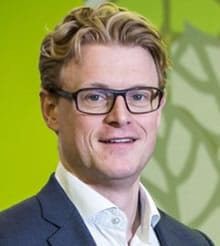
On April 24th, 2017, one of Heijmans’ partners (more below) announced a new smart building / smart facility management solution which it helped building for Heijmans and its customers, called BeSense. It’s a perfect fit for our ongoing series of actual Internet of Things examples and cases, and for a change one that is literally close to home (90 kilometers to be precise).
First things first: the BeSense platform isn’t the first experience that Heijmans has with the Internet of Things and other ‘more recent’ technologies.
On the contrary. The company already is active in smart highways, smart lighting (in another nearby city, Eindhoven, which probably rings a bell if we add that it’s the ‘home town’ of Philips; the municipality of Eindhoven awarded the contract for the 2030 Eindhoven City Lighting Roadmap to the Philips Lighting/Heijmans consortium), other smart areas and a range of innovative solutions in very diverse areas. Just a few: movable homes and self-healing asphalt.
In other words: innovation remains to this day a key trait of the company’s culture and business reality. It does help to have a culture and mindset of innovation to take steps in digital transformation and develop new services and solutions that make business sense in a connected age of data, services, people and devices.
BeSense: business sense for facility management with the Internet of Things – the solution
Back to BeSense. The platform is an Internet of Things solution consisting of an application and data platform whereby the sensors provide (right) data on, among others CO2 levels in buildings, temperature, occupation, humidity, light intensity, activity (usage) and so forth.
The BeSense solution (the website is in Dutch) aggregates all data from sensors, using Microsoft Azure in the cloud (for data management and security), and enables to take decisions based on the data, as IoT applications tend to do, and provides users with the dashboard they need (where the BeSense app and the online platform come in).
Before moving to the practical applications and how the system and app are used a word on connectivity.
As we speak about sensor data which require wireless connections with low bandwidth, over a longer range and with low battery needs (we are talking about facilities and buildings where things should last a while) LoRaWAN was chosen as the IoT communication technology.
This LPWAN technology is extremely popular in The Netherlands but then again: The Netherlands was also the first country to have full nation-wide LoRa coverage and since then we’ve seen an intensification of IoT projects. A phenomenon that analysts who think non-cellular standards have limited impact might want to take note of: look at what happens in the field today in countries such as The Netherlands where we see a lot of interesting things happening with LoRa (which is in no way an expression of a preference, goals, use case, circumstances and strategy drive technological choices).
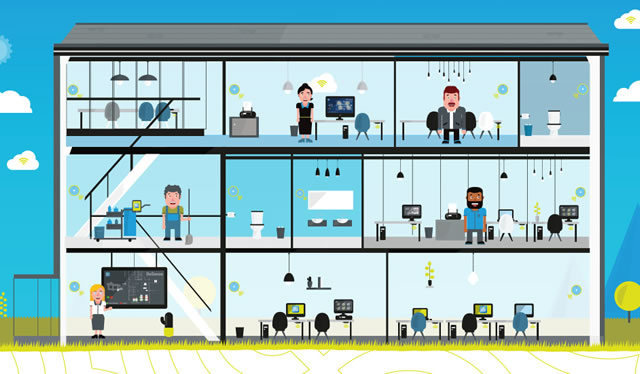
Creating additional revenues with valuable services for facility managers, cleaners, management and workers in office buildings
Back to business and the business case. Heijmans chose to offer the BeSense system as an option to its existing office building customer base and to new customers who want to have an office building, the main type of projects concerned, with smart facility management and building automation possibilities. Moreover, as the solution is plug-and-play it can also be purchased by companies who have or manage office buildings, adding a potential new stream of revenues outside the company’s core business.
The firm and application focus on four key target groups:
- Facility managers, who want to get insights into the various parameters and thus proactively can optimize facility management, maintenance and hospitality.
- CEOs (and CFOs, no doubt) who want to keep an eye on the occupation and usage of their office building, enabling them to save costs.
- Employees who gain insights into which workplaces are available and how busy/calm it is in a specific department. You can indeed think digital workplace in this context.
- Cleaners and cleaning operation managers. Thanks to the app they gain insights into which rooms, offices, public spaces, toilets and so forth need cleaning. Yet , they also get information regarding the tasks and planning and can enter information in the app on anything requiring attention (e.g. broken lamps that need to be replaced).
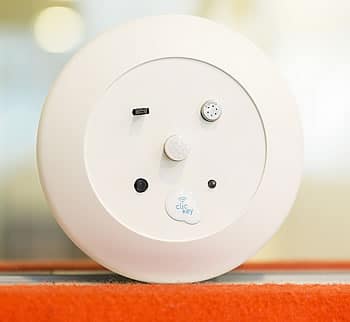
Heijmans has been working with cleaning company CSU to develop the solutions in a form of co-creation. Other partners include ITvisors, which among others developed the end user application in Mendix (Application Platform as a Service) and sensor manufacturer Clickey (member of the LoRa Alliance).
The first projects are (being) rolled out and all in all it took approximately three years to move from concept and collaboration to actual announcement, even if the first projects started earlier. The first project started in the Summer of 2016 in a pilot at the headquarters of Aegon in The Hague, where there is a total of 2,200 workplaces.
A quick call to BeSense learned us that in the future more facility services will be added (connecting information from multiple facility services). Furthermore, the service is indeed available for new and existing Heijmans AND, as a co-created plug-and-play solution for anyone looking for the type of possibilities it offers.
Next case: integrated building automation in a smaller smart building
Top image: Shutterstock – Copyright: Paul Matthew Photography – All other images are the property of their respective mentioned owners.
